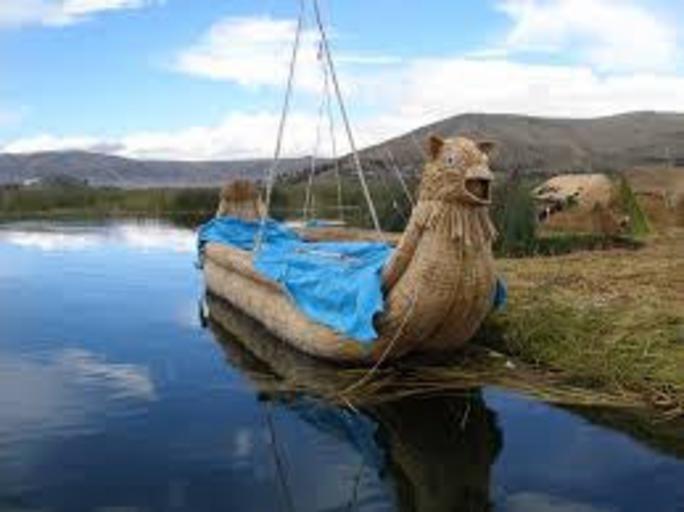MAKE A MEME
View Large Image

| View Original: | lake_titicaca2.jpg (259x194) | |||
| Download: | Original | Medium | Small | Thumb |
| Courtesy of: | www.flickr.com | More Like This | ||
| Keywords: outdoor An important lake in Andean mythology, from which, according to legend, Manco Cápac and Mama Ocllo, children of the Sun god and founders of the Inca Empire, emerged. Peru and Bolivia share sovereignty over this navigable lake, which is the highest in the world at 12,507 feet. It has an area of 3,232 square miles and has a maximum depth of 922 feet. The annual average temperature of its waters varies, from between 48°F and 59°F from October to May, and from -7°F to -28°F, June to September. The lake works as a temperature regulator for the area regulator for the area; if it did not exist, the chance of any type of life would be nil. The Peruvian side has various islands, including Amantaní, Taquile, Ticonata, Suasi, Soto and Anapia (natural islands) and the floating areas created by the Uros (artificial islands). Totora (cat-tail) reeds grow on its shores, in which various birds and fish like carachi, catfish and the suche (which is endangered) live. These are all native species, valued because they are very nutritious. They coexist with trout and smelt, both species that have been introduced into the lake. An important lake in Andean mythology, from which, according to legend, Manco Cápac and Mama Ocllo, children of the Sun god and founders of the Inca Empire, emerged. Peru and Bolivia share sovereignty over this navigable lake, which is the highest in the world at 12,507 feet. It has an area of 3,232 square miles and has a maximum depth of 922 feet. The annual average temperature of its waters varies, from between 48°F and 59°F from October to May, and from -7°F to -28°F, June to September. The lake works as a temperature regulator for the area regulator for the area; if it did not exist, the chance of any type of life would be nil. The Peruvian side has various islands, including Amantaní, Taquile, Ticonata, Suasi, Soto and Anapia (natural islands) and the floating areas created by the Uros (artificial islands). Totora (cat-tail) reeds grow on its shores, in which various birds and fish like carachi, catfish and the suche (which is endangered) live. These are all native species, valued because they are very nutritious. They coexist with trout and smelt, both species that have been introduced into the lake. | ||||